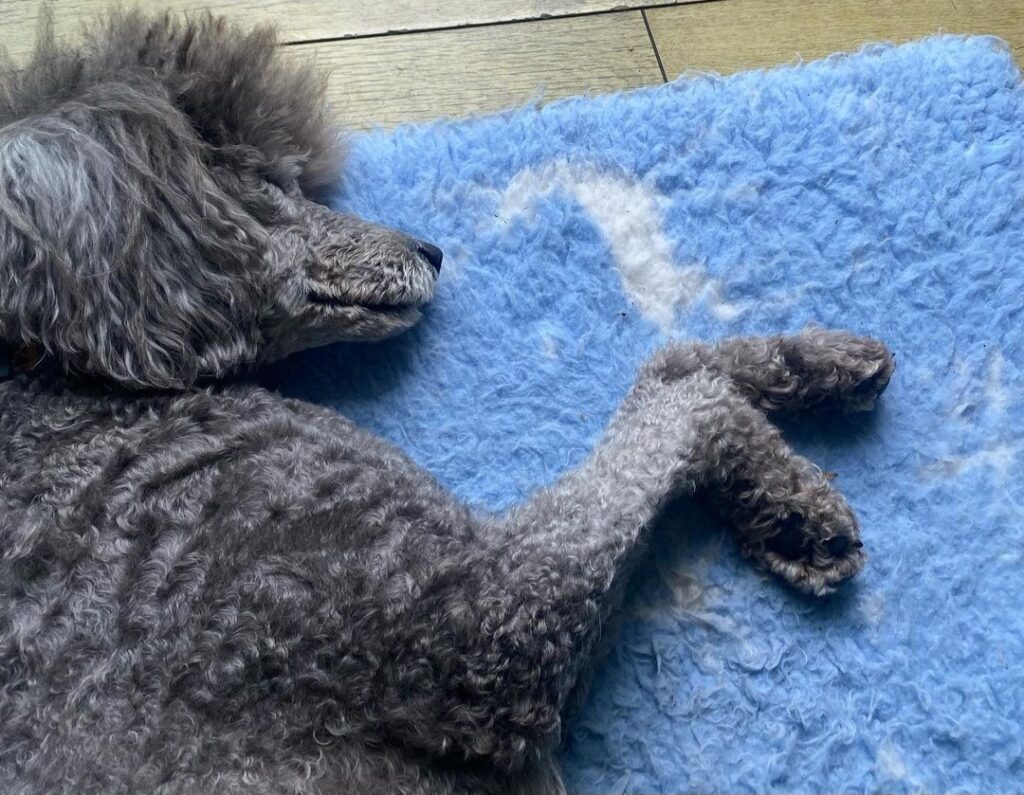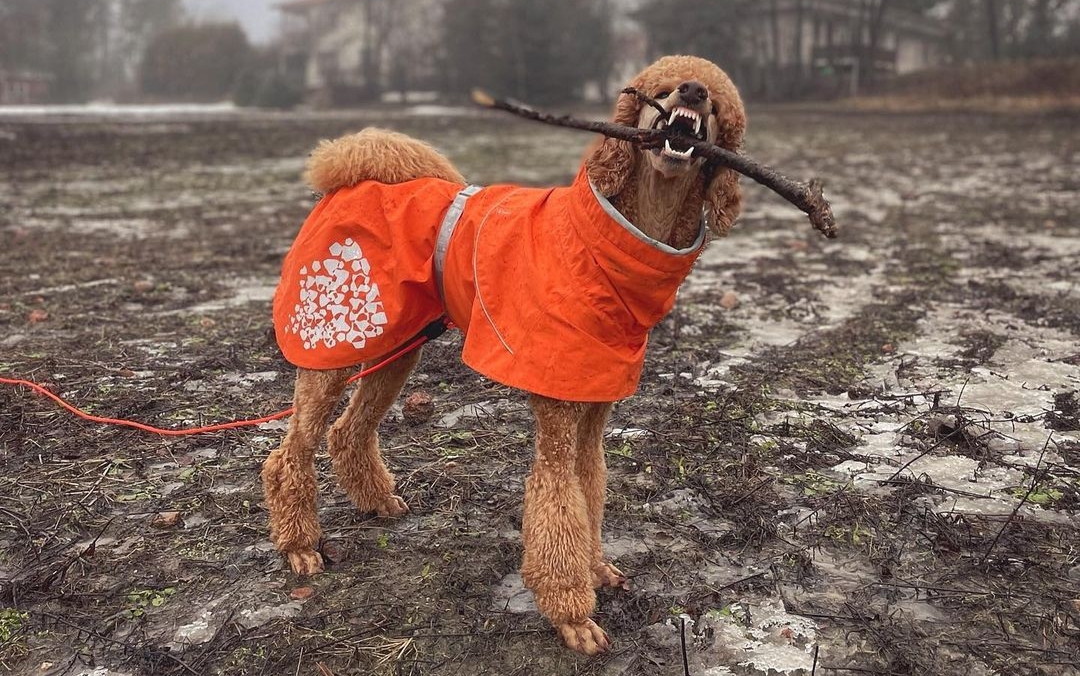Poodles are one of the most recognizable dog breeds in the world, known for their distinctive curly coats and elegant appearance. However, one question that often arises among potential poodle owners is whether all poodles have long legs.
While poodles are generally considered a tall breed, not all poodles have the same leg length. In fact, there are different sizes of poodles, including toy, miniature, and standard, each with their own unique characteristics, including leg length.
So, if you’re curious whether all poodles have long legs, keep reading to learn more about this fascinating breed!
Poodle Breed Overview
Poodles are a popular breed of dog known for their intelligence, elegance, and hypoallergenic coat. They are classified as a non-sporting dog breed by the American Kennel Club and come in three sizes: standard, miniature, and toy.
All poodle varieties share a square-like body, with a straight back and a long, elegant neck. They have long muzzles, dropped ears, long legs, and tails. The coat is one of the defining features of this breed. Poodles have a single coat with a curly and corded appearance. They come in 12 color variations, including white, black, brown, and gray.
The standard poodle is the largest of the three varieties, standing at more than 15 inches tall at the shoulder. They weigh between 60-70 pounds for males and 40-50 pounds for females. Miniature poodles are 15 inches or under and weigh between 10-15 pounds. Toy poodles stand no more than 10 inches tall and weigh between 4-6 pounds.
Poodles are known for their intelligence and trainability. They are often used in dog shows and competitions, such as obedience and agility trials. They are also popular as family pets due to their hypoallergenic coat, which produces less dander than other dog breeds.
Leg Length in Poodles

Poodles are a popular dog breed known for their unique appearance and intelligence. One of the most distinctive features of poodles is their long, slender legs. However, not all poodles have long legs. The length of a poodle’s legs depends on its size and breed.
Let’s start by saying that poodles come in three sizes: standard, miniature, and toy. Standard poodles are the largest, with a height of over 15 inches at the shoulder. Miniature poodles are between 10 and 15 inches tall, while toy poodles are under 10 inches tall. The leg length of a poodle is proportional to its size, so standard poodles have longer legs than miniature or toy poodles.
While all poodles have long legs compared to other dog breeds, the length of their legs can vary within the breed. Some poodles may have shorter legs than others due to genetics or other factors. However, the AKC breed standard for poodles states that the legs should be proportionate to the body, regardless of size.
It is important to note that the length of a poodle’s legs does not affect its ability to perform tasks or participate in activities. Poodles are known for their agility and athleticism, and their long legs are well-suited for activities such as running, jumping, and dancing.
Read: Do All Poodles Have Long Noses
Genetic Factors Influencing Leg Length
Genetic factors influence poodle leg length. The standard for poodles dictates that their legs should be in proportion to the size of the body. A miniature poodle will have shorter legs than a standard poodle. According to a study, genetic factors play a significant role in determining leg length in poodles.
One genetic factor that influences leg length in poodles is chondrodysplasia (CDPA). CDPA is a genetic disorder that affects cartilage and bone development, resulting in short legs. The mutation responsible for CDPA is a change within the gene COL11A2. Dogs with two copies of the mutated gene have a significantly shorter leg length than dogs with only one copy or no copies of the mutated gene.
Another genetic factor that influences leg length in poodles is chondrodystrophy (CDDY). CDDY is another genetic disorder that affects cartilage and bone development, resulting in short legs. The mutation responsible for CDDY is the insertion of an extra copy of a gene called FGF4 to a new location on a different chromosome. Dogs with one copy of the mutated gene have shorter legs than dogs with no copies of the mutated gene.
It is best to remember that not all poodles with short legs have CDPA or CDDY. Other genetic and environmental factors can also influence leg length. For example, patellar luxation, a common orthopedic condition in dogs, can affect leg length.
A study found that Toy Poodles had the highest prevalence rates of patellar luxation compared to other breeds. Littermates of affected puppies with patellar luxation grade ≥2 had a 16.2-fold higher risk of developing the condition, suggesting a strong genetic component.
Variations in Poodle Breeds
Poodles are known for their elegance, intelligence, and athleticism. They come in three different sizes: standard, miniature, and toy. Each size has its own unique characteristics, including variations in leg length.
Standard Poodles
Standard poodles are the largest of the three sizes and are over 15 inches tall at the shoulder. They have long, straight legs that are in proportion to their body. The front legs are straight, the hind legs are angled rearward and are especially muscular in the hips. The paws are small, and the typical poodle tail is docked, but when it is natural, it is medium length and carried high.
Miniature Poodles
Miniature poodles are between 10 and 15 inches tall at the shoulder. They have shorter legs than standard poodles, but they are still in proportion to their body. The front legs are straight, and the hind legs are angled rearward. The paws are small, and the tail is docked to about half its length.
Toy Poodles
Toy poodles are the smallest of the three sizes, less than 10 inches tall at the shoulder. They have short legs that are in proportion to their body. The front legs are straight, and the hind legs are angled rearward. The paws are small, and the tail is docked to about half its length.

Check: Are All Poodles French
Impact of Leg Length on Poodle Health
Poodle leg length can have a significant impact on their overall health. In fact, the length of a poodle’s legs can affect their joint health and mobility. Here are some of the key factors to consider:
Joint Issues
Poodles with longer legs are more prone to joint issues like hip dysplasia and arthritis. This is because longer legs put more pressure on the joints, leading to wear and tear over time. Joint issues can be incredibly painful for poodles and may require surgery or ongoing treatment to manage.
On the other hand, poodles with shorter legs are less likely to experience joint issues. This is because their legs are better suited to support their body weight and distribute pressure evenly across their joints.
Mobility Challenges
Poodles with longer legs may also experience mobility challenges. This is because their legs are longer and may be more difficult to control, especially when running or jumping. Longer legs can also make it harder for poodles to navigate tight spaces or climb stairs.
Shorter-legged poodles, on the other hand, may have an easier time with mobility. Their legs are shorter and more compact, making it easier for them to move around and navigate tight spaces.
Grooming and Care for Long Legged Poodles
Long-legged poodles require regular grooming and maintenance to keep their coat healthy and shiny. Here are some tips for grooming and caring for your long-legged poodle:
Brushing and Combing
Long-legged poodles have a dense, curly coat that requires regular brushing and combing to prevent matting and tangling. Use a slicker brush to remove tangles and mats and a comb to remove loose hair and debris. Brushing also helps distribute natural oils throughout the coat, keeping it healthy and shiny.
Bathing
Long-legged poodles should be bathed every 4-6 weeks to keep their coat clean and healthy. Use a high-quality dog shampoo and conditioner, and be sure to rinse thoroughly to prevent skin irritation. Avoid getting water in the ears, as this can lead to infections.
Haircuts
Long-legged poodles require regular haircuts to maintain their signature look. The continental and English saddle cuts are the most popular for show poodles, while shorter cuts are more common for non-show poodles. Consult with a professional groomer to determine the best cut for your poodle’s lifestyle and activity level.
Nail Care
Long-legged poodles should have their nails trimmed every 4-6 weeks to prevent overgrowth and discomfort. Use a high-quality nail clipper designed for dogs, and be sure to avoid cutting the quick (the blood vessel inside the nail).
Dental Care
Long-legged poodles are prone to dental problems, so it’s important to brush their teeth regularly and provide dental chews and toys to promote healthy teeth and gums. Consult with your veterinarian for additional dental care recommendations.
By following these grooming and care tips, you can keep your long-legged poodle healthy and happy for years to come.
Also Read: Do All Poodles Have Curly Hair
Frequently Asked Questions
Q. Are All Poodles Born with Long Legs?
No, not all poodles are born with long legs. According to the standard for poodles, their legs should be in proportion to the size of their body. A miniature poodle will have shorter legs than a standard poodle. However, some poodle breeds may have longer legs than others due to their breeding history. For example, the standard poodle was originally bred as a water retriever, which required longer legs to swim efficiently.
Q. Can a Poodle’s Leg Length Change Over Time?
A poodle’s leg length cannot change over time. Once a poodle reaches adulthood, its leg length is set. However, a poodle’s leg length may appear to change if it gains or loses weight. When a poodle gains weight, its legs may appear shorter due to the additional weight it is carrying. Conversely, when a poodle loses weight, its legs may appear longer because there is less weight to support.
Q. How to Measure a Poodle’s Leg Length?
To measure a poodle’s leg length, you will need a measuring tape. First, have your poodle stand on a flat surface with all four legs evenly spaced. Next, measure from the floor to the top of the shoulder blade for the front legs, and from the floor to the top of the hip bone for the back legs. It is important to measure both legs to ensure accuracy.

